The Hollywood Tower Hotel
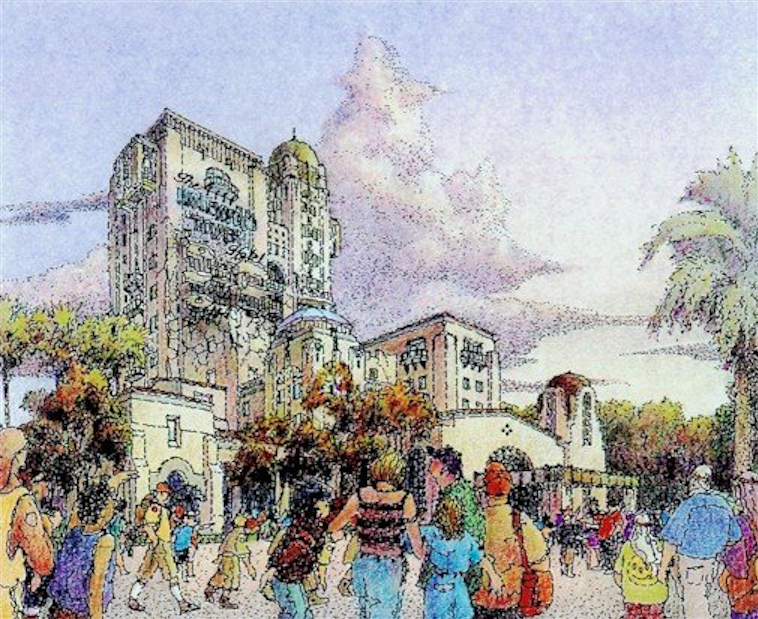
Even if the Twilight Zone Tower of Terror was a shoe-in for Disney’s California Adventure, executives ensured that this version of the ride would look a little bit different. After all, still lodged firmly in the midst of a budget-conscious regime under a now-infamously-restrictive Eisner, Disney Parks were on a tight leash, and Florida’s Tower had been among the most expensive rides Disney had ever built, allegedly running millions of dollars over budget – reportedly $150 million total.
The entire California Adventure park had cost only $650 million, so a clone of Florida’s Tower was out of the question.
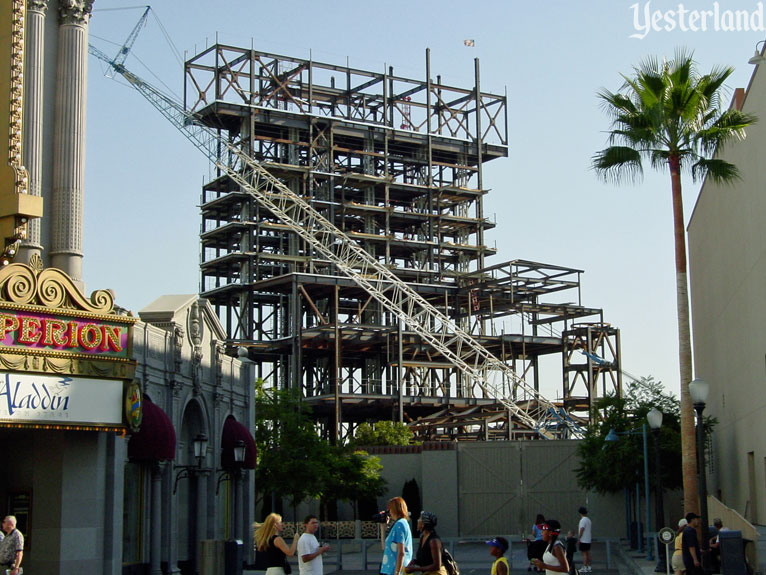
As we’ll soon see know, given the opportunity to develop a second Twilight Zone Tower of Terror, Imagineers made some adjustments to not just alleviate the attraction’s immense cost, but to improve its operations and reliability. Here’s how…
Trying something new
In Florida, there are four separate vertical vehicle conveyance (VVC) “show shafts” (Alpha, Bravo, Charlie, and Delta) that share two high speed VVC “drop shafts” (Echo and Foxtrot).
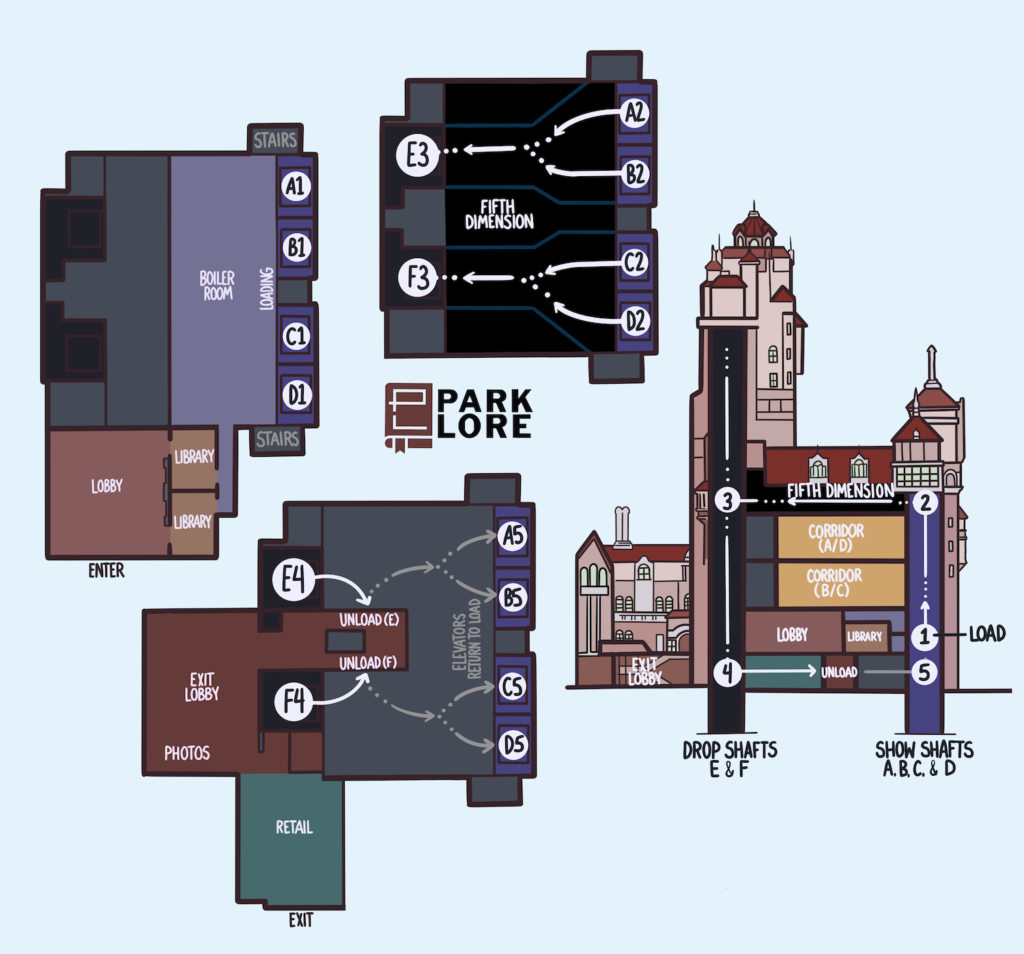
Elevators in show shafts A and B share a “5th dimension scene” wherein the AGV (remember, Autonomous Guided Vehicle) physically exists the VVC and advances forward to connect with drop shaft E, while elevators in show shafts C and D funnel into drop shaft F. Try tracing a single elevator’s path from boiler room to exit, above.
One problem with this system is, as you might imagine, its expense. This elaborate ride system relies on trackess AGV ride vehicles to navigate that horizontal scene. It’s also tempermental… If one of the drop shafts or “5th dimension scene” experiences a technical difficulty, the ride’s capacity is automatically halved.
The system in California would be different, and decidely less complex.
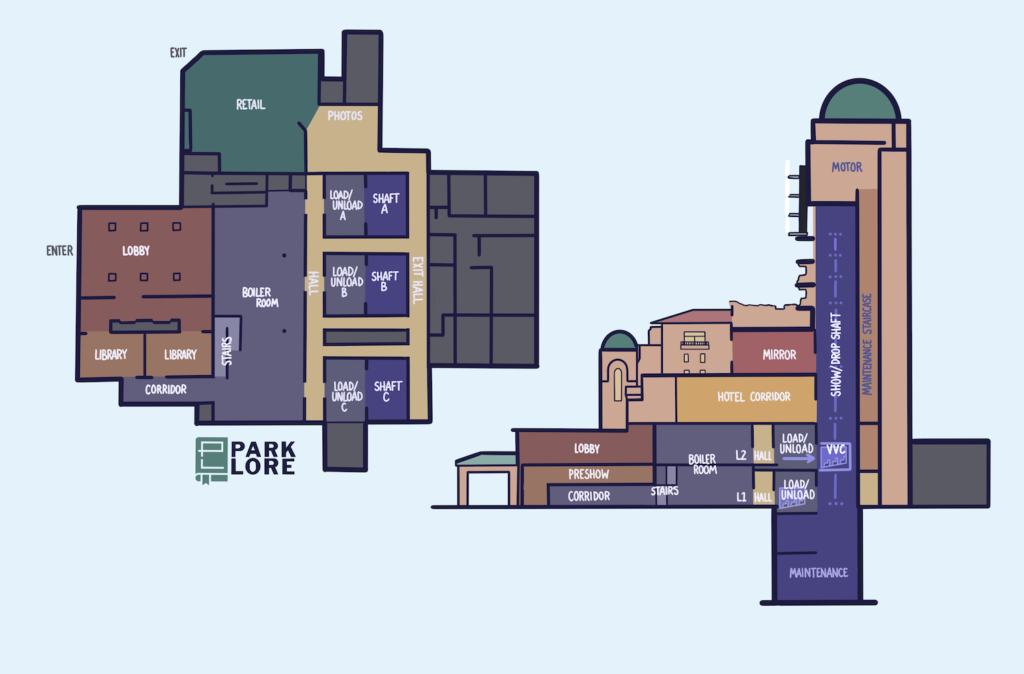
In Disney’s California Adventure, a reconfigured ride system would rely on three shafts – A, B, and C – each serving as both a “show shaft” and “drop shaft” all in one. To keep capacity high, the boiler room become a two-story set-up, so once an elevator is loaded (let’s say, shaft C, upper level), it’s mechanically pushed back from the loading zone and onto a VVC. While it’s in the show, shaft C’s lower level elevator is loading with passengers.
At the end of the show, the VVC returns the elevator to the upper level where it’s pulled back to the gate, then the VVC proceeds to the lower level to catch the next elevator as its pushed back. The upper and lower level of each shaft merely trade off use of the VVC.
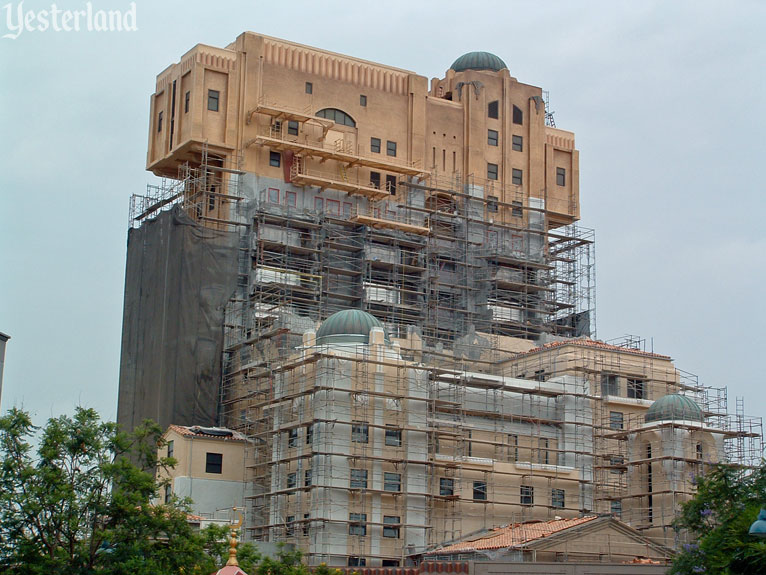
With significantly higher capacity than Florida’s original and a shared VVC making even the ascent and “show” scenes zippy, this reimagined ride system would be a major win. As a bonus, the three ride shafts – A, B, and C – are essentially separate rides, meaning that one could be closed for technical difficulties or even refurbishment without affecting the others. And of course, it would immensely lower the cost of the ride by excluding the AGV ride system.
One of the trade-offs is obvious: without the AGV vehicle, there is no horizontal, trackless scence. The other trade-offs took a little more consideration…
The Twilight Zone Tower of Terror at Disney’s California Adventure (2004)
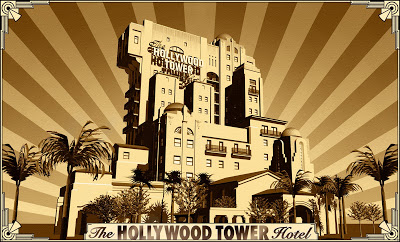
The Twilight Zone Tower of Terror opened at Disney’s California Adventure on May 5, 2004. While the old Hollywood Tower Hotel in California shares the name of that dark, twisted, cathedral-like, Spanish Revival hotel in Florida, the one you’ll find here at Disney’s California Adventure is entirely unique. That’s by design.
For one thing, the foreboding Gothic style is no more, replaced with a warm architectural style called Pueblo Deco, skillfully blending southwest motifs and Art Deco accents with Egyptian shapes and metalwork. While less overtly “horrifying,” the beautiful Southern Californian hotel looks sincerely grand, its towers topped with gorgeous teal domes faded by decades of weathering.
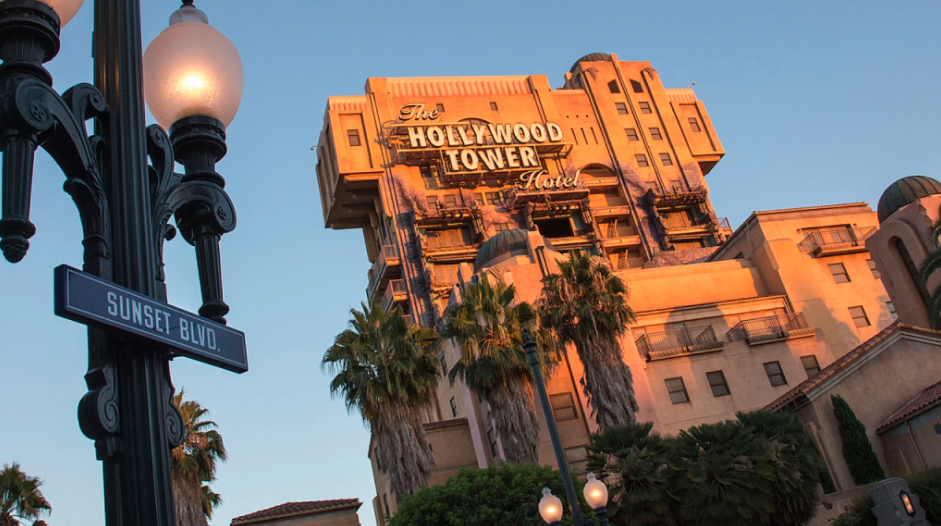
Remember those concessions of the new ride system? You may notice one… California’s ride looks significantly shorter than Florida’s. Though it’s slightly smaller (180 feet versus 199), it’s mostly a matter of perspective… First, California’s ride contains three drop shafts, making it wider and less sleek.
Second, Florida’s ride was able to present show scenes in that big, bulky building behind the facade with the AGV then moving guests into the imposing, flat-faced “drop” shafts housed in the hotel’s tallest tower, right out front and looming. Given that California’s ride edited out the AGV, show scenes need to take place in an extension to the front of the hotel, rather than hidden behind. The new addition makes the tower appear to recede into the distance, making it look less imposing than a steep vertical face would.
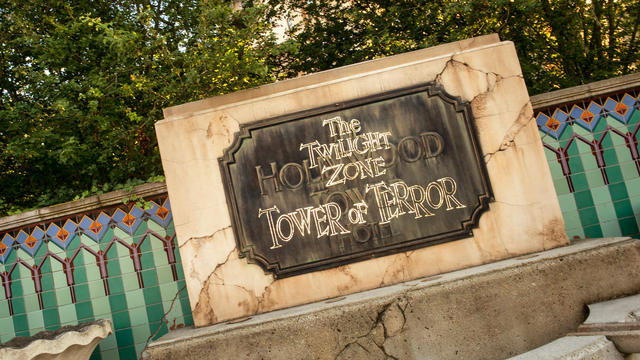
And without the ample space and lofty position Florida’s enjoys, it’s true that California’s Tower of Terror also lacks the atmospheric entry and sprawling, misty gardens. Instead, the building is marked by a cracked, art deco fountain with a stone plaque engraved: “THE HOLLYWOOD TOWER HOTEL.”
But stand at the fountain long enough and you’ll see a light glimmer within. As the lights sparkle within the rock, the Hotel’s sign will be overcome with glowing script: “The Twilight Zone Tower of Terror.” A wrought iron gate before an Art Deco portico serves as the entrance to the hotel’s lobby right from the street, with a small side garden of crumbling statues as its extended queue…
It’s time to see how Disney reinvented the Twilight Zone Tower of Terror for Disney’s California Adventure… and the role the ride played in reviving the park’s story…


